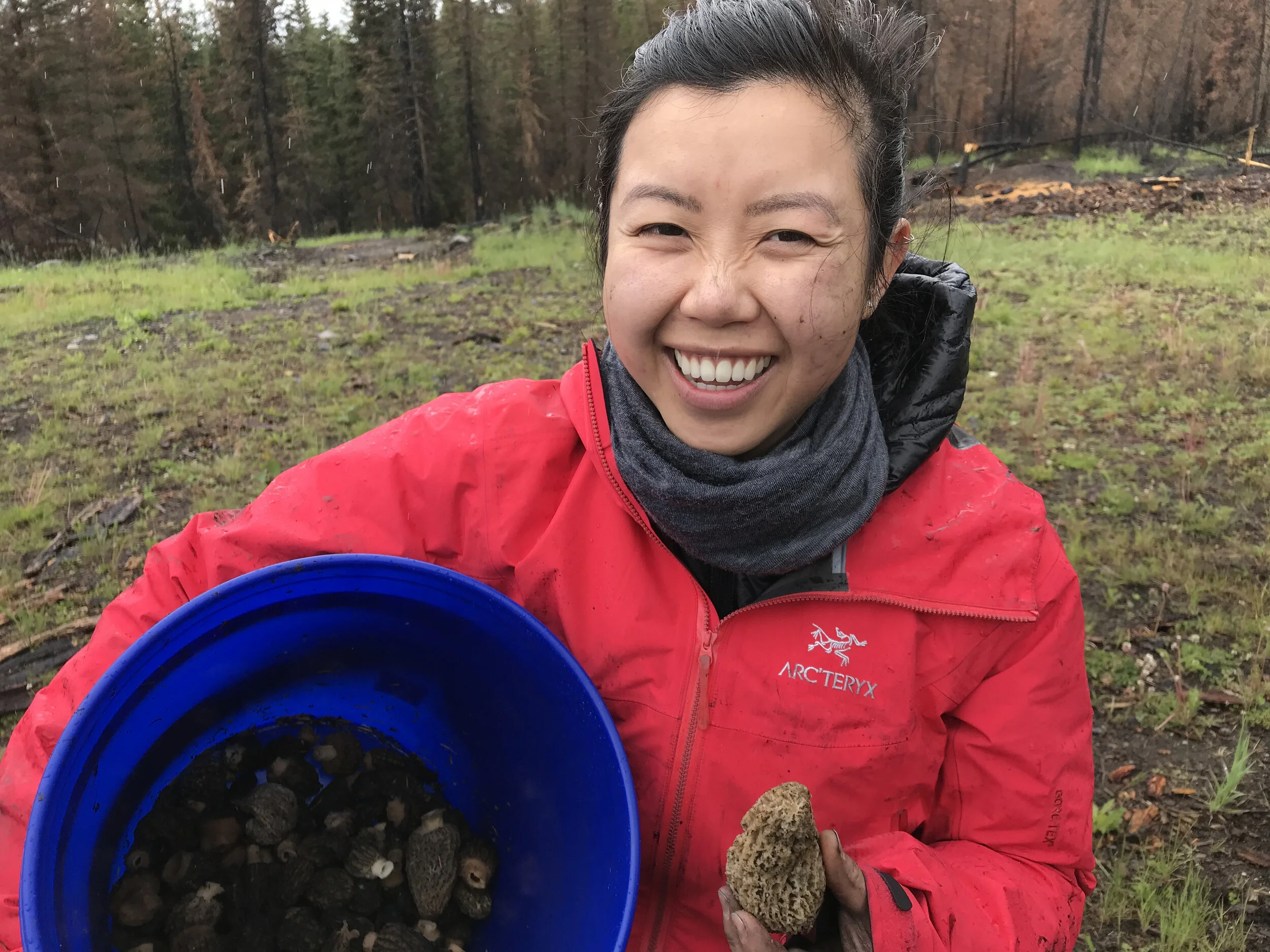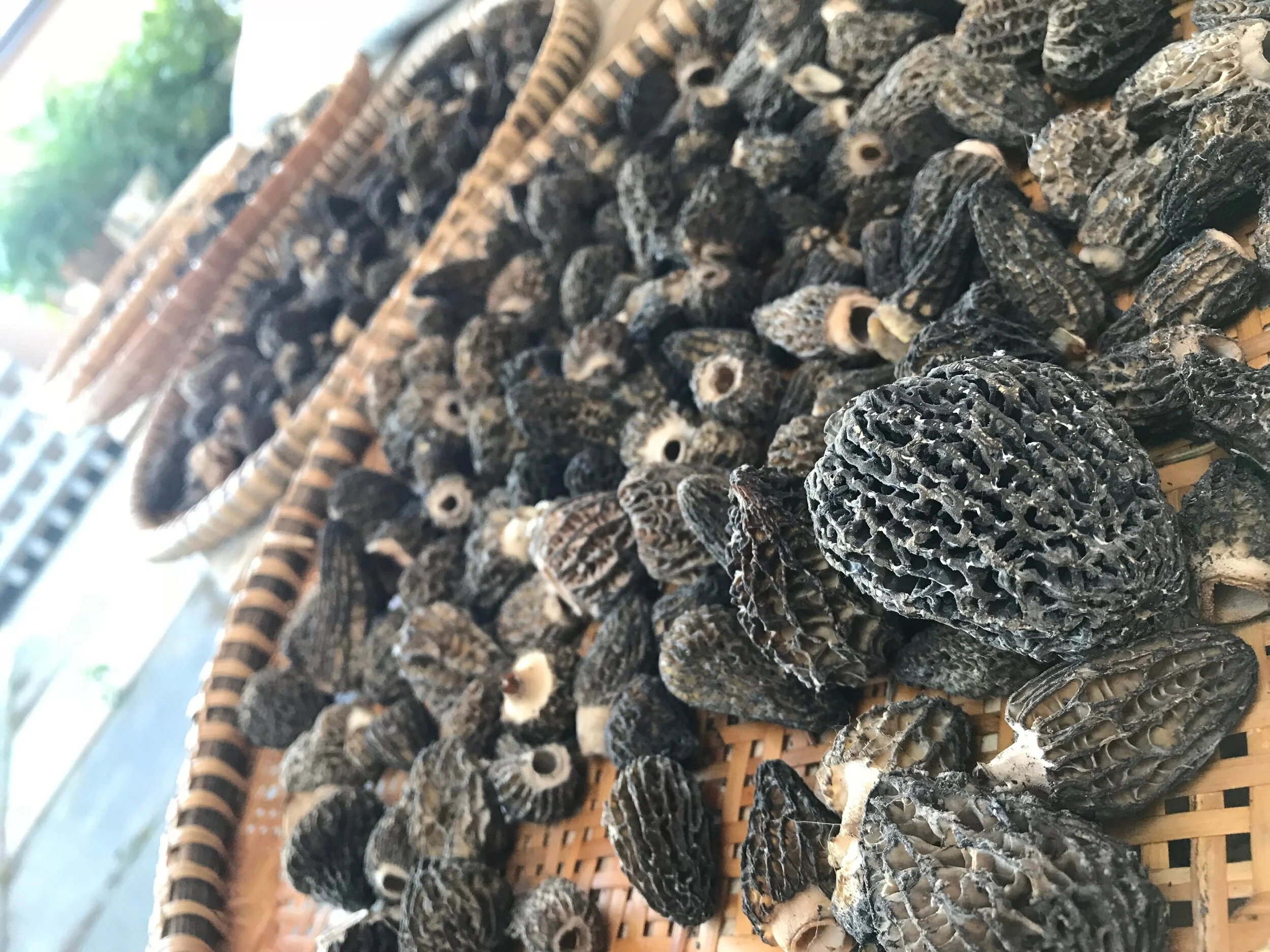Guide to Foraging Morel Mushrooms in British Columbia
This article is a to-the-point guide on how to hunt and gather the elusive morel mushrooms in British Columbia. My first season foraging morels, but I was mentored by Eatwild and many industry professionals. There's also a gear checklist at the end of the article.
What is the health risk of eating morals?
These delicious meaty mushrooms are unique in appearance. Therefore, there's minimal risk of misidentifying and self-poisoning, making them an excellent option for beginner fungi foraging. The false morel, instead of having a honeycomb-like appearance, looks brain-like. They are mildly toxic, but since they look very different from morels, misidentification is rare.
Is it sustainable to pick morels?
Picking morels or any mushroom is a very sustainable practice! Using an apple tree as an example: think of the mycelium (which is underground) as the tree and the apple fruit as the mushroom. Like apples, if you don't harvest them, they rot and go back into the earth.
When to go foraging?
In BC, the season starts May to about June.
Keep in mind the further north you go, the later the season. For example, commercial forages start off in California, move to BC for a few weeks, and end their season in the Yukon.
Wait for there to be rain and hot sun following the rain. The morels will typically be fully grown in a week after this sequence of weather.
Follow foraging influencers and the hashtag #morelmushroom on Instagram. When you start seeing a post about them in your region, that's the most obvious signal to begin your hunt. My favorite influencers are Eric @untamedfeast, Jody @wildnorthernway, and Dylan @eatwild.
Where to go foraging?
Start tracking forest fires. There are many maps online that track last year's forest fires. Google map pin drops are the best way to save your locations.
Go where commercial buyers have set up buying camps. Do not hesitate to pick up the phone and ask around!
This article list a few commercial buyer names here
Don't forget to buy a harvesting license for $20. Read more about the benefits of this new conservation effort here.
Burn area characteristics
Burn areas with trees with slightly green tips near the top of the tree
Some forest fire areas could have burned too hot for anything to have survived.
The ground should be black with ashes soil and covered in pine needles.
Avoid burn areas without too much vegetation (tall grass, large leafy plants, etc.…). It should just be large pine needle trees with only a few sprouts of green grass.
Look for a slope going down towards a water source such as a pond. Sometimes morels thrive on these slopes or right before the drainage area.
I've had the most success nearer to the edges of the burn areas and around large fallen trees.
A reminder that it will take your eyes a while to adjust to recognizing them. The pine needles and root stubs can play tricks on your eyes. Don't be too quick to give up on an area. It always helps to get low on your knees.
What is a healthy moral?
Morels come in many different shapes, sizes, and colors.
Look for a white stem and firm body but not crumbly to the touch.
Older ones have brown-orangey-yellow stems, a softer body, slime, mold, or smell fishy.
Lichen sometimes covers them. Note that this isn't mold
Don't pick anything smaller than your thumb. Give the mushroom a chance to grow and be enjoyed full size. A good indicator is large spores on the body. The ones that are not ready to be picked will have tightly closed spores.
Dark ones grow at the beginning of the season, while blonde ones grow later in the season.
Blonde ones are harder to spot. They start off dark grey, turn lighter grey, or very blonde.
How to pick a moral?
Box cutters are the safest and easiest knife to forage and are commonly used by commercial pickers.
You can quickly retract the blade while you're hiking around. It's muddy, and the risk of falling and stabbing yourself is high.
You can simply break off your blade to sharpen it or carry extra ones.
They are also very light, making it easy to carry
Cut close to the body, leave a bit of stem if it's healthy.
Leave a max of 1 inch, anymore stem, and it's not good eating.
You don't want dirt on your stem because it will dirty the rest of your harvest.
Have a bucket or basket. Avoid using a bag, which will easily bruise the morels.
Have a well-ventilated box (shoeboxes with holes on them work great) to transfer them home
Opinel also makes a foraging version, but next year I will swap out for a box cutter for safety reasons. I had slipped down many muddy slopes; safety first, folks.
How to preserve and eat morels
Do not consume raw! Cook them well. It's almost impossible to overcook mushrooms; the more you cook them, the more sugars start caramelizing, which gives a richer gravy-like flavor.
Only eat a few to start and wait for 24hrs for signs of an upset stomach.
Keep them fresh in your fridge for up to 5 days in a paper bag.
Eat the older ones right away and keep these separate. Just like an apple, one rotten fruit can ruin your whole batch.
Dry the rest. Dry using tightly woven baking racks, chicken wire, baskets, or the cheaper option would use suspended bed sheets. They will shrink to 1/10 of the size. Note that:
Birds or rodents don't get them, so they're safely exposed outside.
It takes about 3-5 days, depending on the weather.
Any dirt that's on them will quickly shake off after
Soak them in boiling water to re-hydrate. Save the broth to make stock and sauces. Some say the dry ones taste even better than fresh ones.
Recommended Recipes
Below are some recipes I've bookmarked from other chefs for myself:
Foraging gear list
Daypack (small backpack) (compass, whistle, and first aid kit)
Water bottle and high-energy snack (nuts, banana, granola bar, jerky, etc...)
Picking mushrooms burn more energy than you think. Stay fuelled!
Bug protection: Thickly woven clothes, bug spray, hat, scarf, and gloves
Those not familiar with the bush, I must warn you your hands and face will be eaten alive by mosquitoes! Stay covered.
Bear spray or other methods of bear scare and protection
Rain gear (if expecting rain)
Good hiking boots, waterproof if possible
Knife
Bucket (with a handle to make it easier)
Ventilated boxes to carry harvest home
Safety First
As silly as it sounds, the chances of you losing your sense of direction in a burn area are much higher than you would think. I chuckled when Jody warned me about getting lost, and twice I found myself looking up and have no idea where the car was parked. The reason is you can quickly forget to look up when you're rolling on the soft earth hunting these elusive mushrooms. Burn areas also have no significant landmarks beyond burnt trees that look the same. The best advice I can give is to drop a pin on google maps before you begin your search, don't go alone, and wear bright colors. Google maps track your location even if you're out of service range!
Alrighty, now I've shared with you everything I know about morels; get out there and forage! I would love to hear about your foraging experience; shoot me an email or tag me on Instagram @chasingfoodclub
Happy Foraging!
-Jenny Ly






